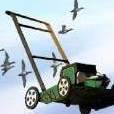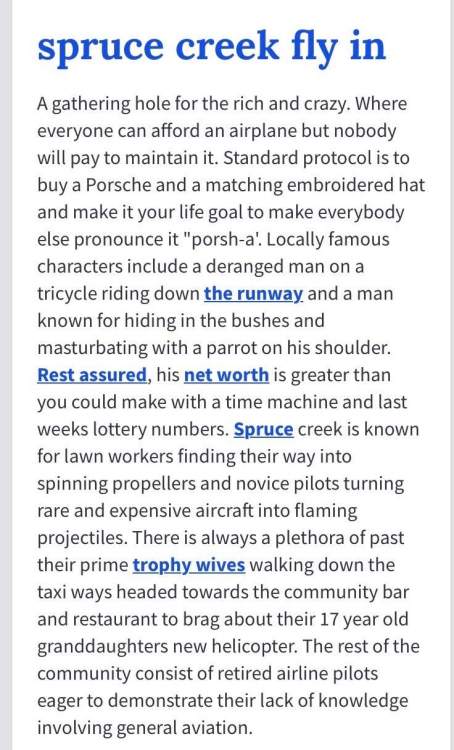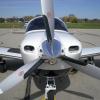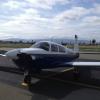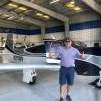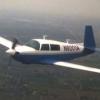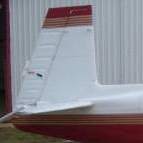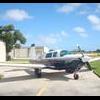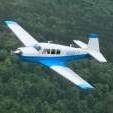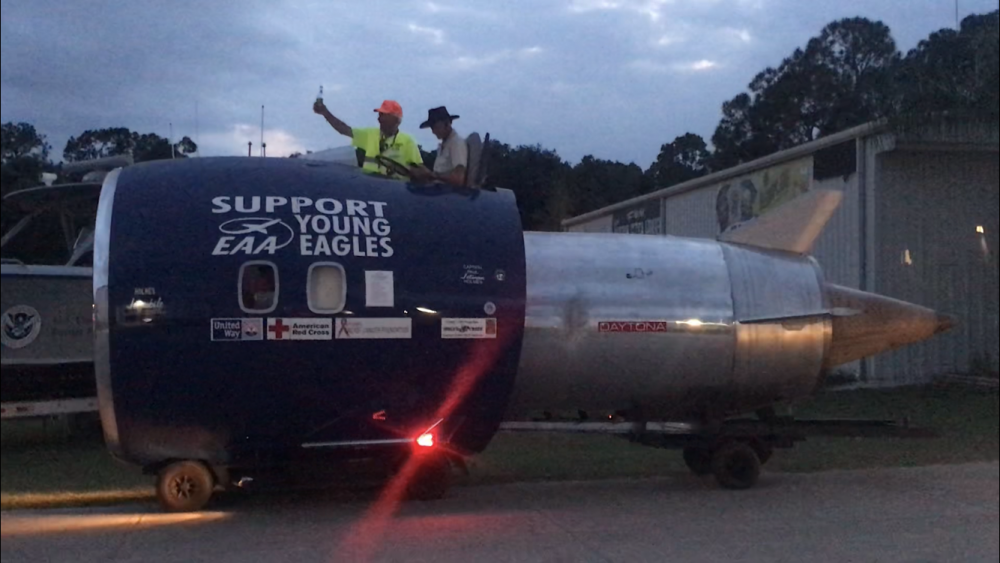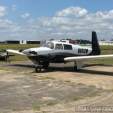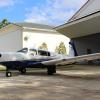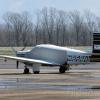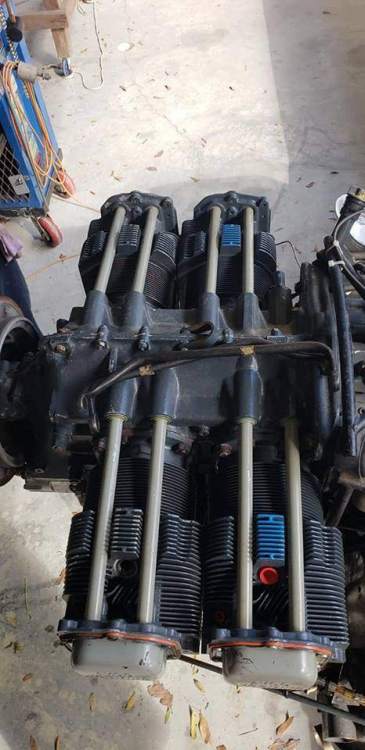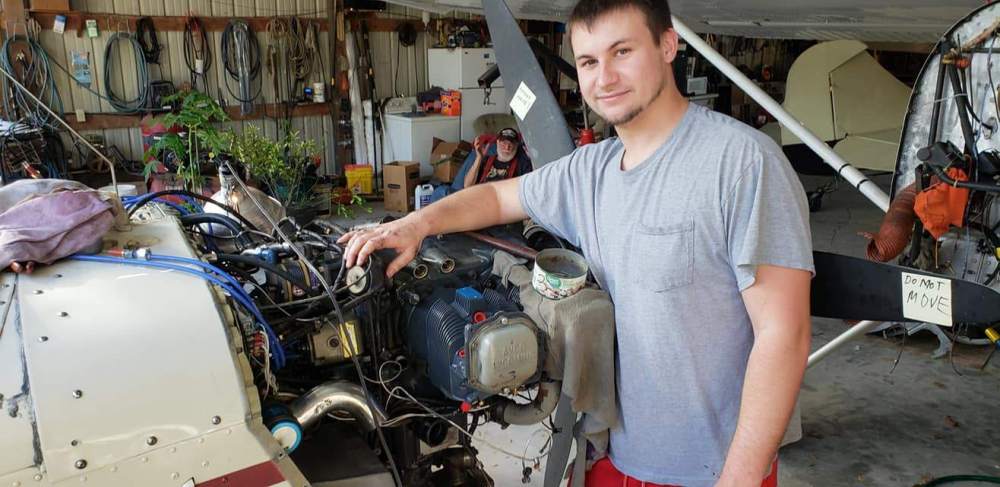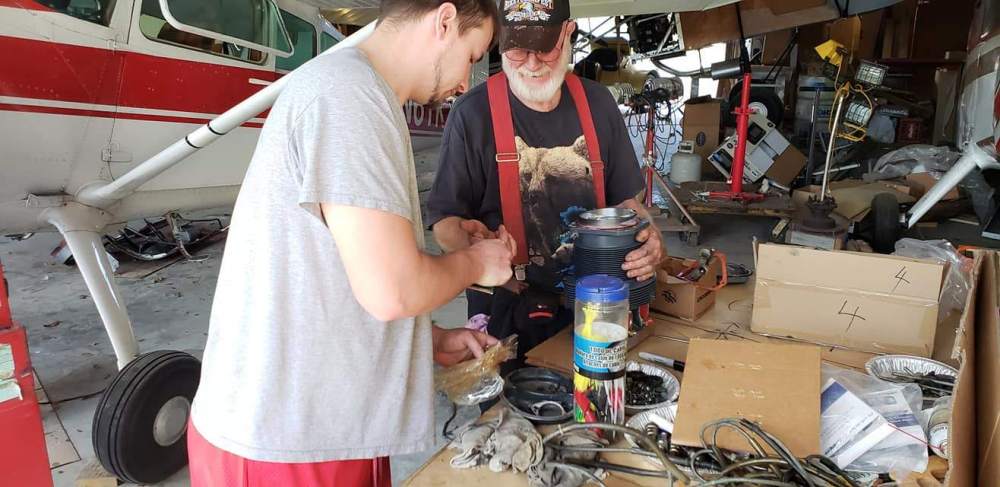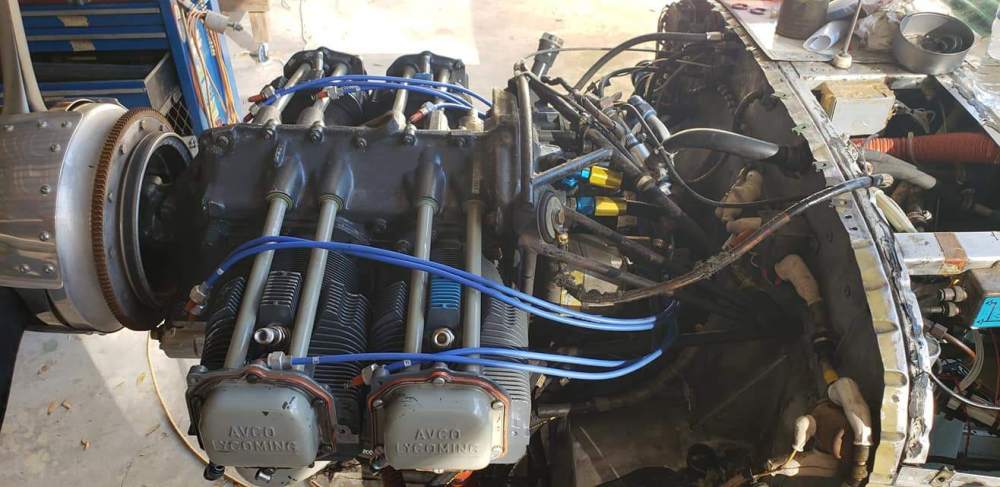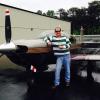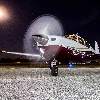Leaderboard
Popular Content
Showing content with the highest reputation on 04/06/2019 in all areas
-
As PIC you have every right to carry that responsibility all the way to your parking spot. The word “unable” is a complete sentence. Have a great time. Sent from my iPhone using Tapatalk11 points
-
This is one of the many reasons I landed at Zephyrhills (KZPH). The volunteers are hard working at these shows but if given just a little authority, they love to exercise it. Zephyrhills had Enterprise right at the FBO, parking was $25 total no matter how many days you parked. Gas was $4.10 and it was not a circus getting in or out of the field. I just don't wanna be part of the airshow.5 points
-
4 points
-
As a follow-up: Two months ago the grease seeping became worse. I crated the prop up and shipped it to Cody Stallings for an IRAN. Cody was great, keeping me advised by texts/pics. The cost to ship wasn't bad via Fedex ground - well worth it for good service.4 points
-
Had an altercation with the ushers today. I flew the Rocket in. It had rained all morning and was raining when I landed. I was told beforehand by two separate individuals to request "Heavy Aircraft Parking." The usher saw my sign and shrugged and asked me to explain. I'm yelling out the window that the airplane has a larger prop and a heavier engine and I cannot park on grass. He doubles down and say "we have it, but not for a Mooney." I saluted him through the open window and followed the ATV to parking where they told me to park on grass. I shut down and refused. They take a few minutes, figure things out and found a paved spot for me. As I was walking back to my plane I stopped and spoke with some of the ushers and asked how I could prevent the disagreement arriving in the future. The old guy in his EAA hat argues with me about how it wouldn't happen in a Mooney and I wouldn't be at risk of a prop strike, so on and soforth. I dropped the discussion and figured I'd just fly the other plane out there if I came back.3 points
-
It’s your plane and your engine. Probably best to err on the side of caution. However, I don’t think you should be surprised that ground personnel look at you sort of odd when you request heavy aircraft parking. You don’t have a heavy aircraft. It has the same nose gear and prop clearance that many factory six-cylinder Mooneys. I frequently land on grass and have no problems taxiing and parking on it. 9 inches is plenty of clearance until you hit a hole. If that’s something you’re concerned about, you should be concerned about it whether it’s wet or dry.3 points
-
9 inches between the ground and $50,000. I think you chose well.3 points
-
Well... the 10" that differentiates the C & E from the F & J is split between the back seat leg room and the baggage area. The front seat room of all those models are the same. Other than that little confusion, there's a lot a great comments above. @carusoam mentioned my retirement plane. I starting flying in a E model 50 years ago and owned another one for a long time when I was working - back in the '70s/'80s. Then I didn't fly for more than 20 years. At age 68 I bought another "Super 21" thinking I might be lucky enough to fly another 5 years. Now 76, I'm on a second 5 year plan and expect to log about 100 hours in '19. From NC we've done a MAPA PPP at Lakeland, Red Sox Spring Training in Ft. Myers, Sun 'n Fun in Lakeland as well as shorter trips to Edenton NC. etc. Still on the docket is MooneyMax in Longview, some Mooney Caravan formation flying before picking up a grandson in MA and sharing AirVenture with him. You will want to get that instrument ticket. The training will make you a much safer pilot even if your retirement status means you don't have to launch into serious weather. Great avionics are available for our old airframes... in fact a 10 or 15 year old plane probably will have a panel inferior to what's in my '66E and certainly won't compare to Don Kaye's M20M. Happy hunting!3 points
-
2 points
-
The MFD 1000 is the only one that makes sense to me. It's the only one that allows for full reversion if the PFD fails. Therefore no other 6pack instruments are required as backups. But it's effectively adding another PFD. It's fully plumed and independent of the PFD.2 points
-
you are adding a duplicate of the PFD. All the same connections are required on the MFD as on the PFD for the reversion.2 points
-
MFD 100 or 500? A 1000 is really a second full install complete with RSM and all wiring to other radios.2 points
-
I agree with you. This is one of the problems with folks who think that all MSCs are great and if you take your airplane there, you'll get a great Annual inspection. I would put more stock in Alex's Annual inspections ( @Raptor05121) than at a mediocre MSC that works on a lot of Mooneys. Alex's IA had him remove all the inspection panels and checked everything- and taught him along the way. The mediocre MSC uses the Mooney 100 hour checklist and looks at nothing additional- because the shop doesn't get paid until the airplane is pushed out the door. For a 2008 M20R, that's not a big deal. For a 1964 M20C, that's a huge disservice. Not all MSCs are created equal. Some are noted positively regularly- like DMax, LASAR, AGL, SWTA, Dugosh, Top Gun, @M20Doc's shop. Others- who knows? You pays your money, you takes your chance.2 points
-
2 points
-
THIS!! That said, assuming grass good shape AND marshaler competent to keep you away from chuckholes/threats, a Rocket is fine on grass. You’ll see plenty of Mooneys on the N40 at OSH. But your AC, your decision.2 points
-
Chances are that you understand the limitations of your aircraft better than a marshal. If you did have a prop strike due to loss of prop clearance in saturated ground, the marshal would have said "Sorry, my mistake", but your insurance company would still be out a lot of money. PIC has the final say in the matter. Your were not wrong.2 points
-
2 points
-
2 points
-
I'm all in on this MAX upgrade and have also purchased an MFD to go with it. For about the first three days after Garmin announced the G3X, I was rethinking this plan and could have backed out and gone Garmin. But after talking with Garmin, sitting through their webinar, reading everything over on Beachtalk, I'm convinced the G3X would be a step back in real capability in exchange for a larger screen. And in my Mooney cockpit with the panel only 12" from my face, the large screen isn't an improvement. MAX Pros for me: Warrantee (I had bought a used PFD with no warrantee) No standby AI requirement (can remove all round gauges, clean panel) Upgrade pricing (I wanted to be early on the upgrade list and not wait for OSH 2020 for the next special pricing) I was able to buy a refurbished MFD and then apply the MAX upgrade. Along with my Barnstormers special PFD, the MAX upgrade effectively turns a used PFD/MFD combo of dubious origins into new equipment with new warrantees. The G3X route would have required a GFC500 autopilot to replicate what I have now. That's expensive and not even available as of today. I already have ADSB, and an IFD540, neither would have worked with the G3X.2 points
-
I might be! I'm probably weird, but I still enjoy walking through airline terminals. I still look forward to going to work, particularly if I've had a week off. This is my 3rd career field, the first was great, the second one sucked. There are 2 adages I like better: "Do what you love and the money will follow." "Do what you love and you'll never work a day in your life."2 points
-
You've got a lot of good flying years left. Buying and selling planes is not a whole lot of fun. Also. a plane becomes a part of the family, and the thought of letting it go, well..... I had about 425 hours when I saw the picture of the Mooney TLS on the front cover of Flying Magazine. I didn't even have an Instrument Rating at that time. I went out and got that rating. Within a month, I had found the perfect plane for me in Trade-A-Plane. It's almost 27 years of ownership and 11,000+ flight hours later. I got my CFI, CFII, and Single Engine ATP in mine. In 6,200+ hours of teaching in every model Mooney except the D and G (there aren't many of those out there) I think I have a little perspective on the Mooney. Buy the most Mooney model that you can afford. You never get tired of the speed. I've taught in Cessnas and Pipers and the Mooney handles better in turbulence than any of them. While any Mooney Model is a good Mooney, the long body offers quite a bit more overall room, especially if you remove the back seats. I have 2 weight and balances; 1 for 4 seats and 1 for 2 seats. They are easy to reinstall, but I don't remember when I have used the back seats. I could go on, but you get the point. You aren't getting any younger. Save yourself the hassle and get the most airplane you can afford now, while you're still young.2 points
-
Has anyone installed a G3 X in their panel and if so can you share some photos of the layout.1 point
-
Last time I went to the dollar store and bought 3 cheap plastic kitchen cutting boards to put under the tires. We left with no issues and others had to be pulled out like you wrote...1 point
-
Just as a point of reference- way before we had monitors i ran a Navajo for almost 1900 hrs with just a TIT gage, Changed only 3 cylinders in that time but I did pay attention to CHT and stage cooling. On a Navajo one can look out at the cowl at night and see through the cooling louvers and look at the bright orange exhaust system. Its a warm, fuzzy feeling :-)1 point
-
1 point
-
I've been trying to figure out whether the plane would be flyable while the PFD was out. I would have an ALT, ASI, AI... no VSI. No GPSS but the STEC50 would still have ALT, HDG, VLOC tracking... GTN and transponder should work... I would not be able to fly a GPS approach... I could remove and send the unit to Aspen then take the plane on a 30 minute flight to the avionics shop. I guess I can just turn off the Aspen and see if there are any surprises. Am I missing something?1 point
-
The wing doesn't move, see my more detailed note above. Another, perhaps more intuitive way to describe the change from the C/E to the F/J is to note that the rear seat=spar=wing=fulcrum remains the same and the engine/nose gear moves 5" forward while the empenagge=tail=hor. stab.=rudder=elevator moves 5" back.1 point
-
1 point
-
Some cool new features I found out this weekend. Autopilot off and try a stall. GFC 500 kicks on and puts in movements to recover. You can just hold down the AP yoke disconnect switch and over ride it or turn it off all together before u practice. Of course in a runaway trim situation u can over power the servo. The best part of the GFC500 is the Yaw damper. Makes all approach intercepts very smooth on autopilot. But a neat thing is u can keep the YD active all the time. The YD can be active when hand flying. The rudder trim is not needed anymore. If I want to hand fly a climb out I just engage the YD and it takes care of the rudder. I prefer to hand fly and only engaged the YD. I tried a steep turn with YD engaged and it did a great job. The safety features work good. Did some unusual attitudes and let the wife push the LVL button. Made her happy. The plane returns to level flight. So far favorite thing about the GFC 500 besides the smooth intercepts and the YD use with out autopilot. Very simple autopilot. Wife can get learn to use it easy. Super user friendly.1 point
-
All the planes at Bartow KBOW were parked on pavement. Parking was $5 per day.1 point
-
I never did look into the legality of cutting a slot for the antenna. The only reason I was considering this was as a low cost temporary solution while I waited for Dynon to come through with an STC. I have now realized that will take years if ever, so I am going straight to a 1090 transponder and whatever else I decide to do to the panel all in one shot.1 point
-
10” here... 10” there... 1) We can use some logic... from spinner to tail... 2) Using the short body as the standard.... everything else gets longer... 3) The short and mid body are near identical from the prop to the instrument panel.... O360 vs IO360... one spnner is a tad longer... 4) Where the pilot sits is the same for both the short and mid body... they pretty much select distance from the IP and rudder pedals the same way.... 5) Sure, Mooney May have drilled extra holes in the floor... slide the chair all the way forwards if you want... the yoke will poke you in the chest during the landing .... that will allow as much space as possible for the back seaters... 6) Many normal sized people will only have a couple of inches between the front seat and the bench seat... 7) Few people are concerned about a chair sliding off the back of the rails in a short body... the chair will stop within a few inches... it will still be a surprise... so make sure you use proper stops anyways... 8) The Other thing that didn’t change... the front of the bench seat... that is the main spar... 9) True: short and mid body have stretched 10” between them... it is clearly between the instrument panel and the main spar... 10) How you split that up depends on the PIC... the PIC selects where he is going to sit... everyone else gets to occupy the space that is left... 10.5) whoever said that 5” went to the front seats, and 5” went to the back seats was... ill advised.... the full 10” is right in front of the finance administrator... where are they sitting? (now you have THE rest of the story) 11) When doing Cg calculations ... the 0.0 location is the same... a bolt on the nose gear... odd choice. But it is what it is... 12) Every inch counts... when I bought my short body... the lowest cost mid body of the time.... cost an additional 10amu... 13) yeah that’s right... 1amu per inch of space... hence the location of the extra 10” is right in front of the FA... 14) Also true...88#s more empty weight...? About $110/LB... for aluminum... worth about 77 cents per pound today... spot price of aluminum.... 15) most important... define your mission first... 16) Bad: Getting too many things... like backseat length that doesn’t get used.... or fuel injection that may be hard to afford.... 17) Bad: Not getting enough things... It is really super expensive to add extra space or fuel injection later... 18) Good: Getting the seat space that you want/need, 20+ extra HP because you can, and a panel ful of waas powered color screens... 19) Ks have longer cowls... to house the extra set of cylinders.... 20) Long bodies get a cavernous extra 10” of space in the baggage area... Don’t do the math... don’t write it down... anywhere... the finance administrator will find it... and that won’t help anyone.... How was that for logic..? Best regards, -a-1 point
-
The best discount at the show I saw was if you like Phillips X/C oil...55 bucks for the case...same price for most of their oil...you buy it there and take it home with you. they have a golf cart there and will drive it to your plane Almost everything else you can get online... And I feel okay saying this being that I spent 10's of thousands on Garmin.....The Garmin people need to just go away.....my friend who I was with who wants the same 40k panel I have asked me why they were such assholes....I said to him I thought they were nice, you should have seen last year.....1 point
-
Thanks. I actually searched to see if I was crazy, and I saw where i found it. I guess I was reiterating bad info. Didn't know there was misinformation on the internet.1 point
-
An honest question. Is the nose wheel to prop distance or weight any different than a bravo? What about the distance between the nose wheel and main gear? I normally follow @LANCECASPER ‘s advice and use a close airport (bartow). Hotels and rental cars are so easy in that area and I just don’t get the camping vibe like I do at OSH.1 point
-
At Oshkosh last summer, the day that they announced the Max, I stopped by the booth and, at that point, I heard that they were exchanging the units. A few days later I heard that they were making you send in yours for the upgrade. Yesterday I heard that between 15 and 20 people a day are signing up for the max upgrades. Best case scenario, if it takes 2 weeks to do the upgrade by the time it travels there and back and gets installed, that means that there are between 150-200 aircraft grounded (AOG) at any given time due to the upgrades. Again, best case scenario . . . Combine that with all of the airplanes in the shops for ADS-B and it should be interesting where all of these planes will be stored. Add in the complexity of dropping the airplane off and getting a ride home and then the reverse two weeks later . . . For people that have multiple screens, if they charged $500 for exchange on all three units I'd do it, just to simplify things.1 point
-
1 point
-
Ummmm….. Yes... Kinda not WHAT it tracks as HOW it tracks.. If you wish to read for a few... :) The TT has one ARINC 429 input and one RS232 input , both inputs use the same connections.. It listens to 232 data initially, but internally switches to ARINC if it is present. If the VOR is digital, the ILS is digital, your GPS is digital, the DG is digital, and your HSI is digital, - it will follow any of them as long as the ARINC 427 data sentence has the standard order. The TT (or any digital AP) does not know WHAT it is listening to, or cares, - it just points the aircraft where it is being told to.. Problem is, most of the above output steering instructions in our OLD aircraft are in the old ANALOGUE (++150Mv) format. Good in its time, but this format can send only ONE steering signal at a time. (Vertical or lateral) Any flags etc. have to have a separate wire for each flag or digit. (ARINC can send gobs of information in a single wire) So, if you have modern digital instruments outputting in ARINC data, the new breed of digital autopilots are happy. This is why some of us are excited about the coming TT integration with the Aspen and G5. With the aspen, it understands the "old" format, accepts (say your old analogue VOR) the signal, translates it to ARINC and sends it on to the TT which happily does what it is told. Your GPS Navigator outputs whatever you need by a menu selection. Mine will output the old format and several types of ARINC sentences. So the Aspen will accept this data in whatever format the instrument sends (even a radar altimeter) and acts as a "switch", selecting whatever instrument you want to follow, translates whatever information it is using, sends it on to the AP in ARINC format and everybody plays together. I suspect the Garmin G3X may do much the same thing. The Aspen will do this now. What we expect will happen (waiting game again, Aspen has some work to do, and this has to be approved by FAA) is you will be able to set the Baro , Alt, VS and heading on either equipment and it will synchronise to the other instrument. Most VFR functions will be set on the Aspen and the TT will follow along obediently. The TT head will be (mostly) relegated to an "On - Off" switch... Your GNS 430 will function as this source "switch" and enable the TT to follow your VOR and ILS or RNAV or whatever your 430 is tasked to do at the time. FWIW, I heard from one Cherokee driver who tested the 430WAAS and TT on an approach. It flew the aircraft through the entire approach, power changes, flap extensions (calling for trim) and it flew to the Rny centerline in a 7-10 knot crosswind until he "squeezed and flared" at 5 ft. alt. ("squeezing" refers to the CWS switch on the yoke, discoing the AP) Apologise for the long answer to a short question... but this may be helpful to some... :) Nav1 point
-
I bought my C model out of convenience. It was a Mooney owned by a friend and he was in a position to sell when I was looking to buy thinking I would only have it 3-4 years then move up to a F or J. 1,100 hours later my wife and I are still flying it. It has been the perfect airplane for us as we find 99% of our flights are just two people. Living in Little Rock area we can be a lot of places in little time. Two weeks ago, I flew to Crestview FL via Birmingham, spent the night with friends and was back home by 2:30 pm on Saturday. I have been to Monterey, Maine, all along the east coast, Bahamas and Oshkosh and UP Michigan. Kids live in MO so we fly to Branson 1-2 times a month (have a van parked at KPLK). Since I am still working, this plane has allowed my wife and I to enjoy things that wouldn’t have been possible if we had to drive. People always preach define your mission and buy a plane to fit your mission. The C model has fit our mission. Wouldn’t have minded having an E model. Even though the kids are out of the house you now have to start thinking about the grandkids!1 point
-
I've been considering the upgrade and have just had some dialog with Aspen the last couple of days. $3k sounds like a no brainer to me especially considering that my warranty extension ($800) is due this year for my legacy Aspen, so that's a new $10k PFD for about $2.2k exchange, which also comes with a 2 year warranty. My flying is very conservative these days, but the risk of losing AHRS with a pitot blockage has always bugged me with the first gen product. Aspen says about half day labor to install (including wiring up audible alerts to the audio panel), which if accurate seems very reasonable. So for shooting approaches the audible alerts adds another layer of safety as does the lack of dependence on pitot static when IMC. I forgot to ask what labor is required to install a second MFD, but I think I'll go that route as well at some point. And then remove the vacuum system as it's only driving a backup AI right now, but I digress...1 point
-
1 point
-
Before i bought the aerostar (aka the mooney twin, aka the finest twin ever built), I took a ride in a rocket for sale. The retired airline pilot coached my landing instructed: "no more than a standard rate turn in the pattern." That safeguard has stuck with me for over 10 years and counting.. Another 90+ yo wwII veteran c310 twin flyer told my on my final goodbye to him, may he rip, at the airfield, Fresno airpark, "Don't do a hollywood takeoff john...." I don't know why these rules aren't carved in stone like Yahweh's 10 chapters given to us through Moses, or the three gun safety rules (and all mooney owners, having proven ourselves by our aircraft choice, are undoubtedly packing), but they should be. Here's three cheers to none of us stalling on the turn to final, or the yank and bank on takeoff, agreed?1 point
-
First annuals are a learning experience... Second annuals you come prepared with bags of of SS hardware, tinnermans, and a couple of 1/4 turn fasteners.... an electric screw driver with a variable clutch, ziplock bags, and labels for everything... and appropriate clothing for being on a concrete floor in the middle of winter.... and you learn to shift the annual by a month each year... Third annual, you have a plan to swap out things you saw and didn’t like in the second annual....like old hoses.... the mission is to stay ahead of the mechanic while you remove, and clean, and replace panels... By the time you get to the fourth annual, you have fully researched how the flaps are supposed to work, and how not to lose the tiny ball bearings... you go in with a plan of making things work like new... At the 10th annual... you are pleasantly surprised that you know how all this stuff works... but, a bit miffed by the stuff you are replacing a second time... the hours on the airframe and engine have added up... a question arises.... is this going to be my forever plane? Time flys by at Mooney speeds... Call it a successful annual... start collecting ideas and parts for the next one.... hmmmm.... forever plane....? Best regards, -a-1 point
-
1. Your plane was built after the AD was issued. So rod ends were correct from factory. Now lubing the gear is good 2. I could probably do a brake in an hour. But if they cleaned and painted. Others seem not too out of line1 point
-
1 point
-
Back from the dead. N6744U is doing great. I just surpassed 500 hours TT. IFR checkride is around the corner and really looking forward to starting my commercial. We did a compression check for this years annual and found two cylinders low. Diagnosis confirmed they were leaking via the exhaust valves. Cyl #4 had 2200SMOH @ 52/80psi and Cyl #3 was the newest at 450SMOH @ 35/80psi. I was a little ticked at something as new as Cyl 3 going junk so soon but then again, I did buy this plane for $16,000. I ordered two overhauled steel cylinder/piston assemblies from Don George Aircraft in Orlando for $850/ea. Also purchased new oil cooler lines and misc parts to comply with SB M20-110 for oil cooler line rerouting. Also ordered new spark plugs and wires. The actual act of removing the cylinder and putting them back on was NOT hard at all. I quite enjoyed working on the engine itself. The inside cam and crank were beautiful from what we could see. What I didn't like was the 8+ hours I spent on the doghouse. We did do QUITE a bit of patching to it, and it is tighter all around. I also ordered some ACF50 and resprayed the entire fuselage. Total cost for new cylinder assemblies, hoses, wires, annual inspection and labor: $3,150. My hourly labor: Approx 40-50 hours spread over two weeks. My mechanic really taught me a lot and I do think this was probably the most "fun" annual I've had in terms of learning new stuff. The break-in was fun. I think I got 2.5 hours of flying out of 40 gallons of gas with the power settings Lycoming recommended. Mineral oil out at 15 hours and sample sent off. Filter was clean.1 point
-
Welcome aboard, CD. Nicely worded first post. Part of the reward of building a successful family.... the kids grow up and chase their dreams... They May end up a couple of hundred miles away... nothing a firebird can’t cover... every other month or so... a five hour ride in nice weather. Over time... That kind of travel discomfort leads to only visiting on major holidays... I did it slightly differently... I was the young guy that moved away... the firebird, a real experience... Keeping the family together, I found an M20C could bridge that distance in just over an hour. Shooting over for lunch, hang out for a few hours, be back before dark.... no traffic. The firebird plan worked well until the kids arrived... how many diaper stops are there in a five hour drive, that’s on a good weather day.... Traveling that distance was too far to go by firebird, as often as we wanted to go there... Because we had an M20C... My kids new their grandparents very well... Sometimes we visited weekly, over the summers... Sometimes we visited daily or on the drop of hat... when grandma fell ill.... As the kids grew up, it was harder to hide Santa presents under a blanket in the back of the plane... so we threw on another flight to deliver the presents without anyone figuring it out... With a decade of M20C experience, and the invention of MS... We could have determined... If the M20C is really the right plane for the mission. The M20E has one attribute that makes it better. The IO360... The M20G has one attribute that makes it better. The 10” more space in the back seat area... The M20F has the two attributes combined in one plane... Overall, I have called the M20E the perfect retirement plane... Factory built Four seat Normally aspirated Fuel injected, capable of running deep LOP... Fully updateable to modern standards. For comparison... The oldest MSer was still flying in his 80s with an M20J... he picked a great personal time to hang up his flying boots. Find Bennet... The youngest MSer is still flying in his 20s with a C converted M20D... Find Alex... There are so many choices, analysis paralysis can eat into your flying time... Write out what your flying mission is typically going to be and match the Mooney that Best fits the mission... If you need to quiet the paying passenger (finance administrator) in the back seat... get the biggest comfy back seat available.... go Long Body! Enjoy the hunt. Oops, just realized you were seeking wisdom... these were just ideas that came to mind... Bob may wander by later... he has one of those perfect retirement planes... clearly marked ‘Pilot Perfect’ right on the side... PP thoughts only, not a plane sales guy... Best regards, -a-1 point
-
I live on the East Coast and always heard for years that there is no need to have a turbocharged aircraft if you do most of your flying in the east. Personally, although I still own a normally aspirated fixed gear Saratoga, I would never again get non-turbo charged piston aircraft. I do most of my trips in the Bravo in the mid to high teens, and it is great to get up in the cool smooth air, have the ability to get over much of the weather, catch favorable winds, etc. I know that there are some that might not like strapping on a cannula, but it really doesn’t bother me. You also have a nice block of semi private air space with not many other aircraft operating in that altitude range since the big iron operates higher and most of the general aviation fleet operates lower.1 point
-
https://www.bloomberg.com/news/features/2019-03-13/two-737-max-crashes-in-five-months-put-boeing-s-reputation-on-the-line "Following the latest crash, Boeing sent engineering leaders and sales executives around the globe to answer questions and explain a software upgrade they hope to roll out in coming weeks. The update, which takes about an hour to download, will make sure the MCAS compares data from two angle-of-attack vanes instead of relying on a single potentially faulty sensor. There will be limits to the number of times the system can nudge the nose down and to the amount of force it exerts. The redesign has been tested in multiple flight-simulator runs and flights, but it must also be certified by the FAA." I am flabbergasted that the inputs into this hidden system relied on a single sensor! I cannot imagine how this passed a rigorous review, FMEA, etc from any controls engineer, much less the FAA.1 point

